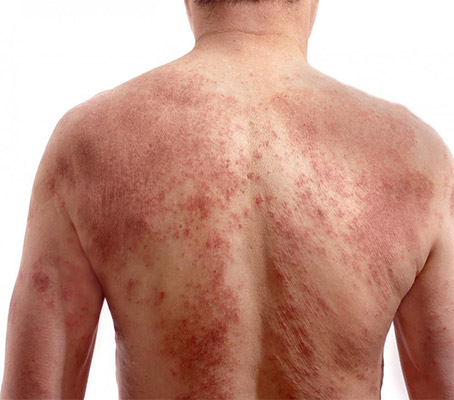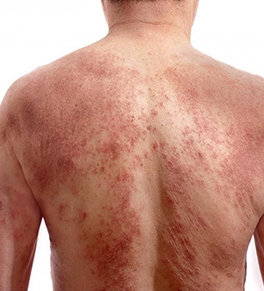
Rashes and hives appear as red or flesh-colored bumps anywhere on your body. They typically feel itchy but can also sting or burn. These conditions may appear and disappear suddenly, or appear and linger for months or years. In addition to causing discomfort, rashes and hives can make you feel self-conscious about exposing the affected areas of your body.
Both rashes and hives occur as allergic reactions to specific substances or situations that act as triggers, and triggers differ by the individual. The most effective way to deal with rashes and hives is to start by identifying the triggers related to your skin condition.
Allergy and Immunology specialist Laura Ispas, MD, of Allergy Asthma & Immunology Institute in Leesburg, Virginia, has the expertise to identify the triggers related to your skin condition. After pinpointing the causes of your skin irritation, Dr. Ispas develops an individualized treatment plan to relieve your existing symptoms and prevent future outbreaks.
What hives actually are
Hives, or urticaria, occur during an allergic reaction. The reaction promotes the release of histamine, which works to destroy the allergen but also causes the small blood vessels under your skin to leak fluid. The fluid accumulates and causes swelling, which appears as oval-shaped welts ranging from less than one inch to several inches across.
Hives disappear as your body absorbs the extra fluid. While no individual welt lasts longer than 24 hours, new ones may replace those that disappear. Acute hives include episodes that last fewer than six weeks. Chronic hives last longer than six weeks, sometimes lingering for months or even years.
The many causes of hives
Avoiding your triggers can help minimize the occurrence of hives. The most common causes of hives include the following substances:
- Foods such as nuts, fish, eggs, tomatoes, berries, and milk
- Medications such as aspirin, nonsteroidal anti-inflammatory medications (NSAIDs), painkillers, and drugs used to treat high blood pressure
- Latex
- Pet dander
- Pollen
- Bacterial infections (often throat and urinary tract infections)
- Viral infections (often infectious mononucleosis and hepatitis)
- Insect bites and stings
- Internal diseases, such as vasculitis, lupus, and thyroid disease
- Plants, such as poison oak and poison ivy
Physical hives occur after direct physical stimulation of the skin from the following circumstances:
- Exposure to the sun
- Hot or cold temperature extremes
- Exercise
- Stress
- Pressure on the skin from sitting or applying weight on the same area for too long
- Scratching or rubbing your skin
Rashes explained
Rashes include a wide range of skin irritations that originate from many different causes. They can be infectious or noninfectious. All types of rashes can itch, while some cause pain and burning. Rashes appear as blotches, blisters, or welts in one area or all over your body.
While most rashes aren’t life-threatening, rashes with the following characteristics require immediate medical attention:
- Quickly spread all over your body
- Accompanied by a fever
- Accompanied by labored breathing
- Blistering
- Pain
- Infection
What causes rashes?
Typical causes of noninfectious rashes include:
- Eczema (atopic dermatitis)
- Contact dermatitis (when an allergen comes in contact with your skin)
- Psoriasis
- Dandruff
- Rosacea
- Dry skin
- Autoimmune diseases, such as lupus
Infectious rashes often originate with viruses, bacteria, fungi, and parasites that include the following:
- Ringworm
- Impetigo
- Staphylococcus scabies
- Herpes
- Chickenpox
- Shingles
What treatments exist for rashes and hives?
Many cases of rashes and hives resolve on their own without treatment. Over-the-counter hydrocortisone cream and antihistamines can help control mild itching. However, without identifying the source of recurring rashes and hives, you may experience a series of outbreaks for years.
The best treatment for rashes and hives involves identifying your triggers and avoiding those substances and/or circumstances that cause an allergic reaction. Dr. Ispas provides expert assessment of rashes and hives to determine the source of your skin irritation and expedite relief of your symptoms.
Depending on your condition, Dr. Ispas performs a skin prick or patch test to identify the allergens that trigger your reaction. If appropriate, she may prescribe medication to alleviate symptoms. She may also recommend allergy shots, which can desensitize your immune system and reduce allergic reactions.
When contagious rashes occur, Dr. Ispas may use skin scrapings, biopsies, nasal cultures, or blood tests to identify the virus or bacteria causing the irritation. These tests help her determine the appropriate medication necessary to eradicate the organism and the resulting rash.
With an individualized treatment plan for your rash or hives, you can be comfortable in your own skin again. Schedule an appointment online or call our office for a professional evaluation of your rash or hives at Allergy Asthma & Immunology Institute.






